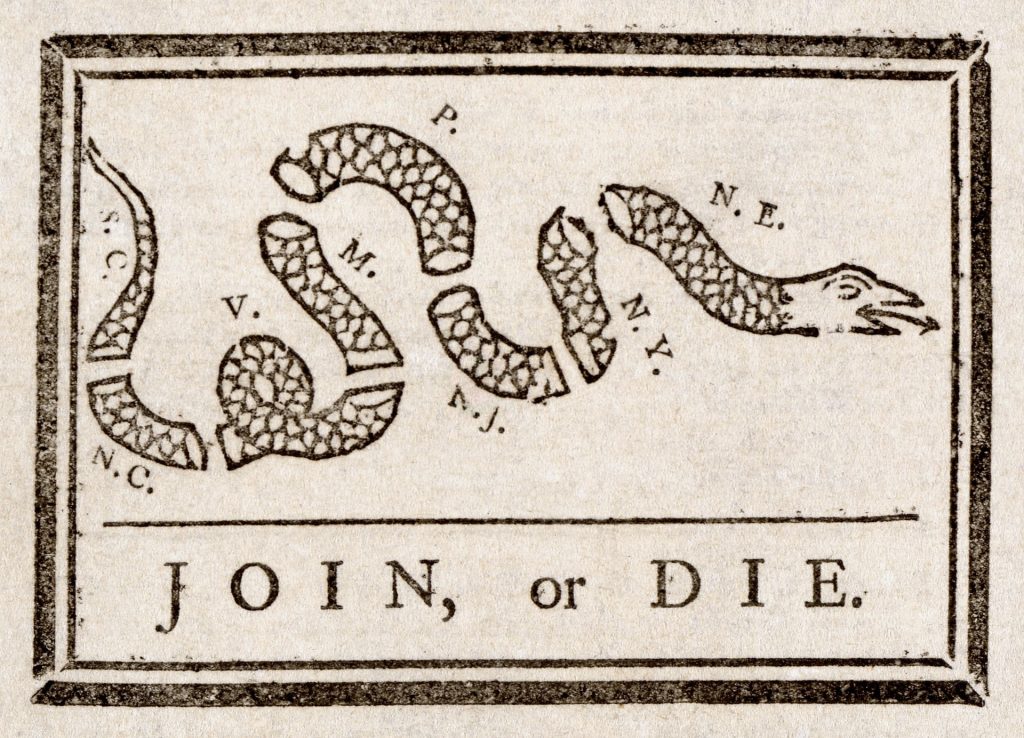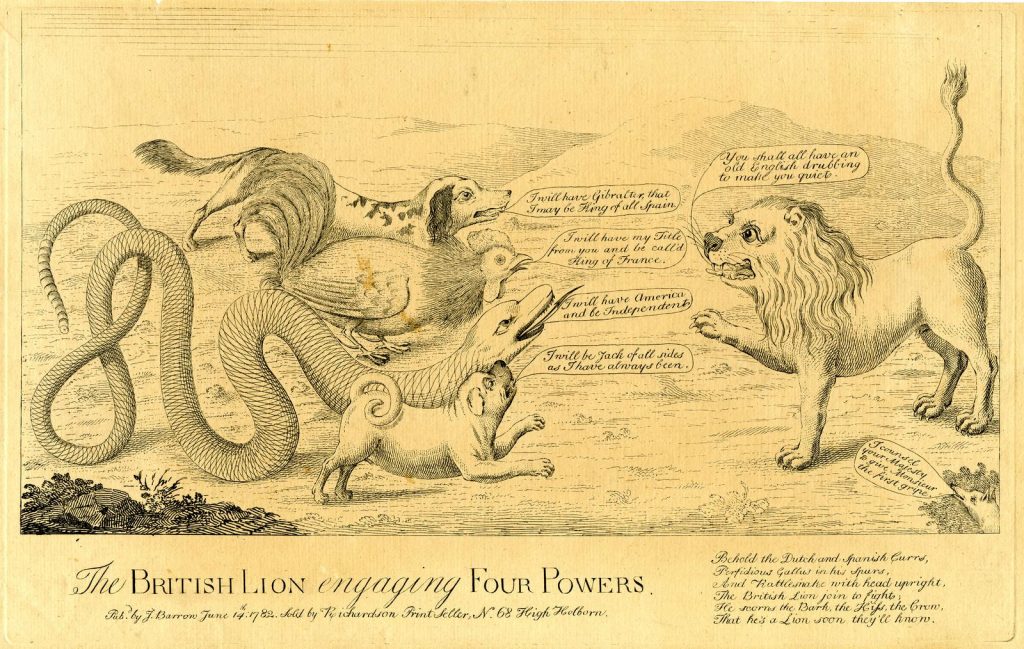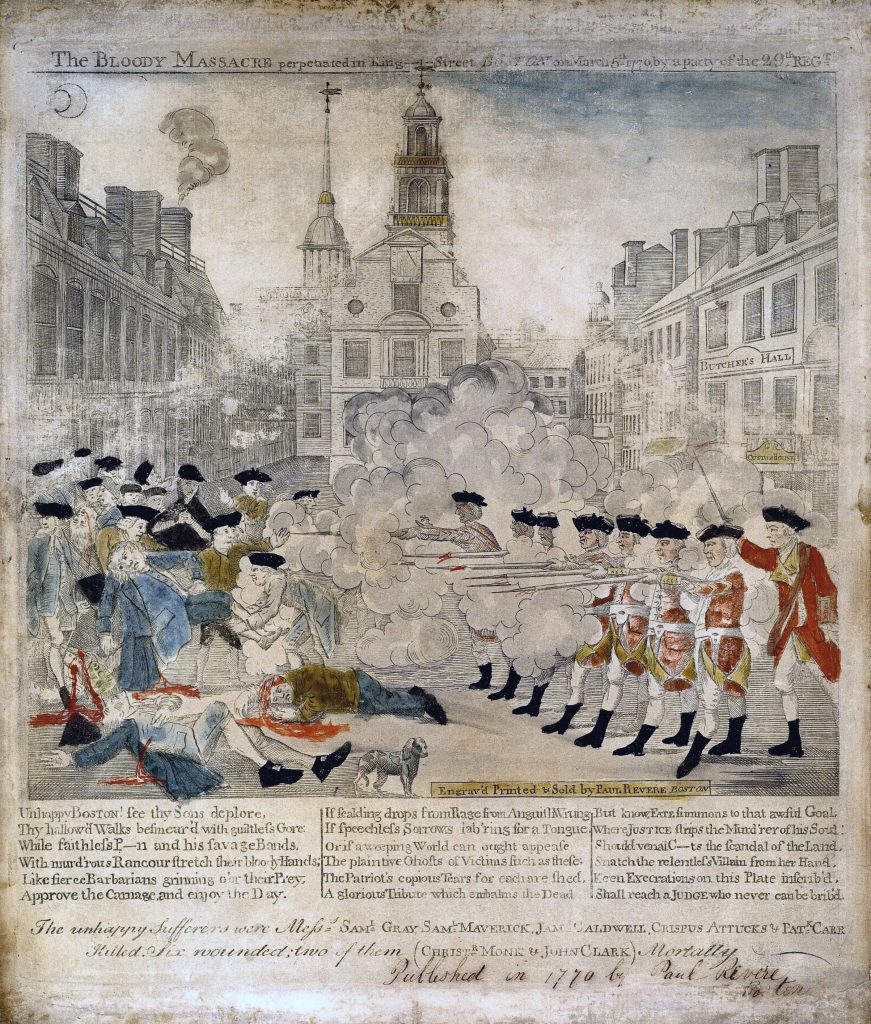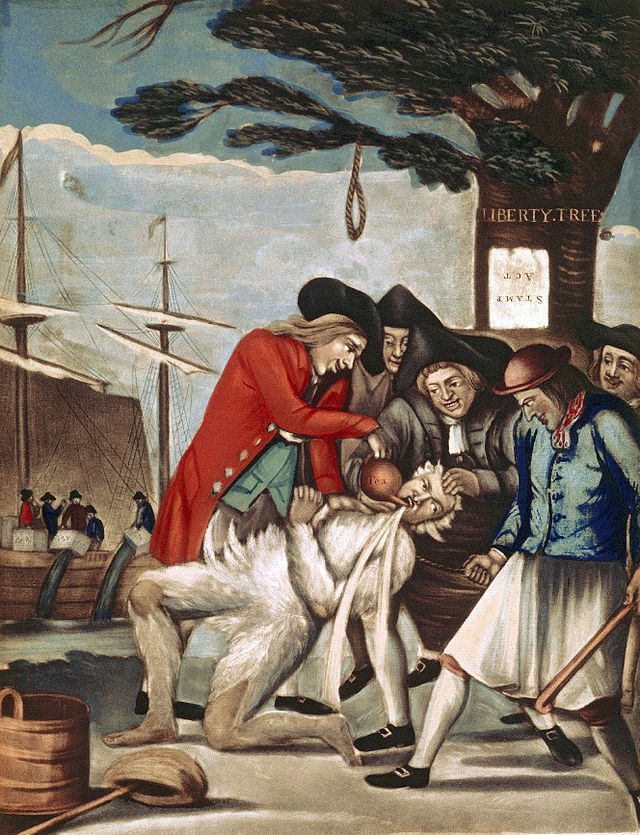Contents
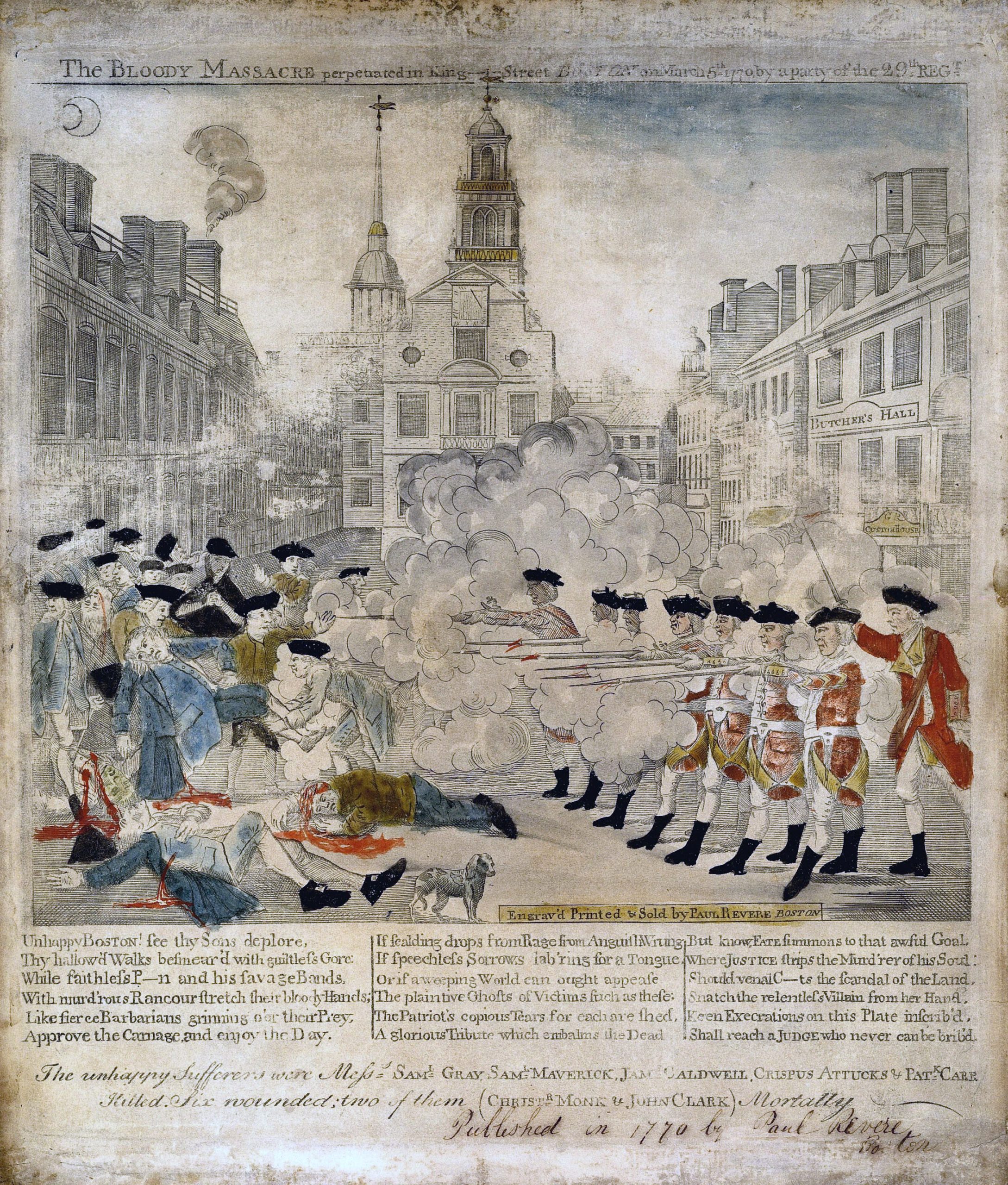
Contents
During the American Revolutionary War, propaganda was used by both sides to influence public opinion on the conflict.
Propaganda was especially important as both the Patriots and the British were trying to recruit settlers as soldiers. At the outbreak of the war, a significant proportion of the civilian population remained loyal to the Crown.
The Founding Fathers are renowned for their ability to sway political opinion, and their determination in doing so. They were incredibly successful in securing support for the war, especially given the level of support for the British at the start of the conflict.
Examples
Below, we’ve provided some examples of propaganda symbols and imagery seen in the American Revolution, and explained how they were used.
The rattlesnake
In 1754, Benjamin Franklin published the first political cartoon in American history, known as “Join, or Die”.
The cartoon depicts a rattlesnake cut into eight pieces, representing the most important colonies of the time (New England was shown as one piece, and Georgia was omitted).
Franklin was urging the colonies to come together to defend themselves against France during the French and Indian War, which took place from 1754 to 1763. However, this cartoon gained increased significance during the Revolutionary War, when the snake was used in propaganda as a symbol of American unity, such as on the Gadsden Flag.
American forces used the rattlesnake to portray their cause as noble, as it is a creature that only attacks others in self-defense. It was also used to urge the colonists to stay united in opposition to the British.
The British however used the rattlesnake in propaganda to portray the colonists as evil, treacherous, and disloyal, such as in The British Lion Engaging Four Powers (1778), shown below.
This cartoon portrays Great Britain (the lion) going up against France (the cockerel), America (the snake), Spain, and the Netherlands (both dogs). At the time, France had entered the war on the side of the Americans, and Spain and Holland had strained relations with Great Britain.
Each of the animals makes a claim from the lion – the snake says “I will have America and be independent”, for example. The lion responds “You shall all have an old English drubbing to make you quiet”.
The Boston Massacre
Paul Revere was a political activist and member of the Sons of Liberty from Boston, Massachusetts. He created what is considered to be one of the most powerful examples of propaganda from the American Revolution.
On March 5th 1770, a British soldier guarding Boston Custom House was involved in an argument with a local, which escalated into a situation where nine British soldiers were harassed by an angry mob of about 300 people. The crowd was throwing stones, and eventually the British soldiers opened fire on them, killing five people.
The event was labelled “The Boston Massacre” by the Patriots, while the British referred to it as the “Incident on King Street”.
Three weeks later, Paul Revere published a wood engraving of the event, titled The Bloody Massacre Perpetrated in King-Street Boston on March 5th 1770 by a Party of the 29th Reg.,.
The scene portrayed is historically inaccurate in certain areas, for example, it depicts the event occurring during the day, rather than at night. Also, British Captain Thomas Preston did not give the order to fire as the scene depicts – the volley of shots into the crowd was a panicked response from the Redcoats.
This is one of the most well-known examples of American propaganda seen during the war, and it was very effective in garnering support for the revolutionary cause.
Thomas Paine’s pamphlets
During the American Revolution, pamphlets were an important form of communication. They were easy to print, widely distributed, and often seen by thousands of people extremely quickly. It was common for them to be read aloud in taverns, as well as spread among members of the public.
Thomas Paine, a Patriot activist originally from England, produced two of the most important series of pamphlets for the colonials, which were credited with capturing public opinion during the Revolutionary War.
His first work, Common Sense, published in January 1776, pushed for American independence from Great Britain. It was one of the first mass publications to argue for complete independence from the United Kingdom, and was described as “incendiary” by historians – its language was very forceful.
It is estimated that 500,000 copies of Common Sense were distributed during the war. The population of the colonies was only 2.5 million people at the time, meaning that at least one in every five people were exposed to this piece of propaganda.
Paine also produced The American Crisis – a series of 16 pamphlets – between December 1776 and April 1783.
The American Crisis was written specifically to inspire the Continental forces. The first edition was published at a time when the army had suffered a series of defeats, and was experiencing ammunition, food, and other supply shortages. It is the source of the famous quote “These are the times that try men’s souls”, and lamented soldiers who only supported the revolutionary cause when their militias were performing well.
Thanks to Paine’s writing prowess, both of his works are credited with improving morale and rallying support for the Revolution during a very important period for the colonial cause.
British depictions of colonial discontent
Before the Revolutionary War officially began, the colonists expressed their discontent towards British policy decisions through protests and demonstrations, which led to civil unrest.
For example, in 1774, John Malcom, a Loyalist customs officer, was taken from his house in Boston and publicly tarred and feathered, as an act of protest against the Tea Act.
This scene was depicted by Philip Dawe in British newspapers, in a print titled The Bostonians Paying the Excise-Man. Malcom is depicted as being forced to drink tea, portraying the colonists as barbaric and lawless.
Dawe also published The Bostonians in distress in the same year, depicting Bostonian rebels suspended in a cage from the Liberty Tree after their actions during the Boston Tea Party. The scene shown never happened – Dawe is stating that the act of dumping tea into the Boston Harbour was reckless, and the colonists would soon pay for their actions.
Themes
Propaganda used by both sides argued for the righteousness of their cause. However, there are some important differences in how the messaging was framed.
American propaganda
- The British were brutal tyrants, who ruled with no care for the welfare of the colonists.
- The colonials were fighting for a righteous cause – freedom, independence, and liberty. This type of messaging was often based on Enlightenment ideals. It was also used by American diplomats in Europe, to try and encourage countries such as France and Spain to join the war effort on the American side. In some respects, the Declaration of Independence could be considered the best example of this type of American propaganda.
- Taxation without representation was grossly unfair, and must be resisted.
- The colonies must stick together to offer the strongest possible resistance against the British Army.
British propaganda
- The rebels were traitors, and disloyal to the Crown.
- The rebels were brutes, with no respect for the rule of law.
- The British Army was far stronger than the rag-tag rebel militias, and would quash any resistance with ease.
- Becoming independent would be economically risky for America (this messaging was aimed at Loyalists in the colonies).
- Quashing the rebellion was necessary to maintain the strength and order of the British Empire (this messaging was used in Britain to gain support for the war effort).


